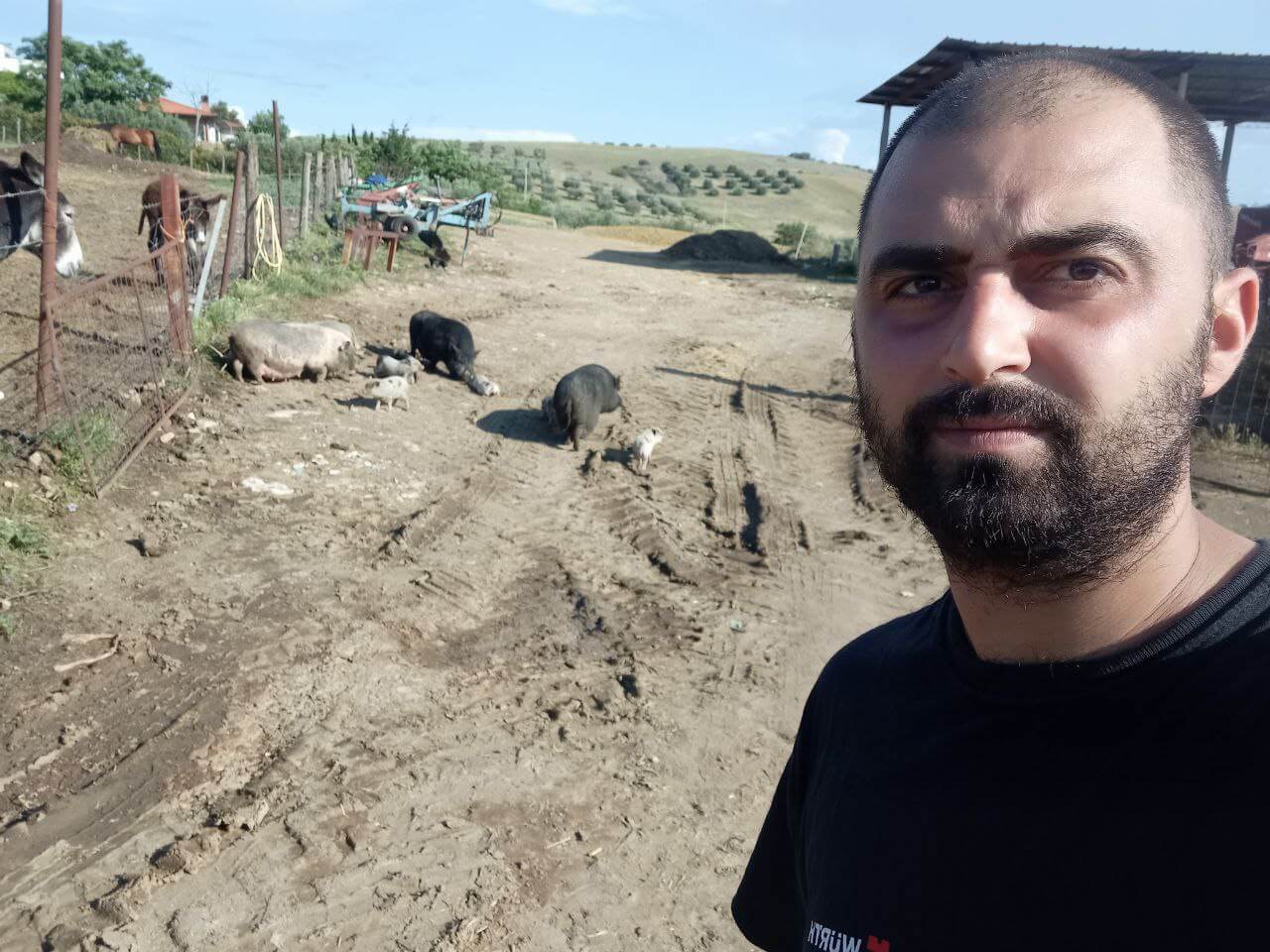
Vietnamese Pot-bellied pigs are undoubtedly funny and cute animals.
Being an animal lover, I enjoy having various animals on my farm. As a special birthday gift (yeah, it was a nice gift), another friend farmer gave me a Vietnamese Pot-bellied sow and boar over 8 years ago, and ever since, I have been breeding and raising them. Typically, I maintain a herd size of around 15 to a maximum of 20 pigs.
Today, I would like to share some helpful information with those interested in breeding this pig breed. I will provide facts, advantages, disadvantages, and useful tips about Vietnamese pot-bellied pigs.
Contents
- The History and Origins of Vietnamese Pot-bellied Pigs
- What is a Vietnamese Pot-bellied pig?
- Pig Characteristics
- Growth Rate
- Temperament and Behaviour
- Vietnamese Pot-bellied pig meat
- Growing Pot-bellied pigs
- Is it worth raising Vietnamese Pot-bellied pigs?
- How much does a Pot-bellied pig cost?
- Advantages and Disadvantages
- Photo gallery
The History and Origins of Vietnamese Pot-bellied Pigs
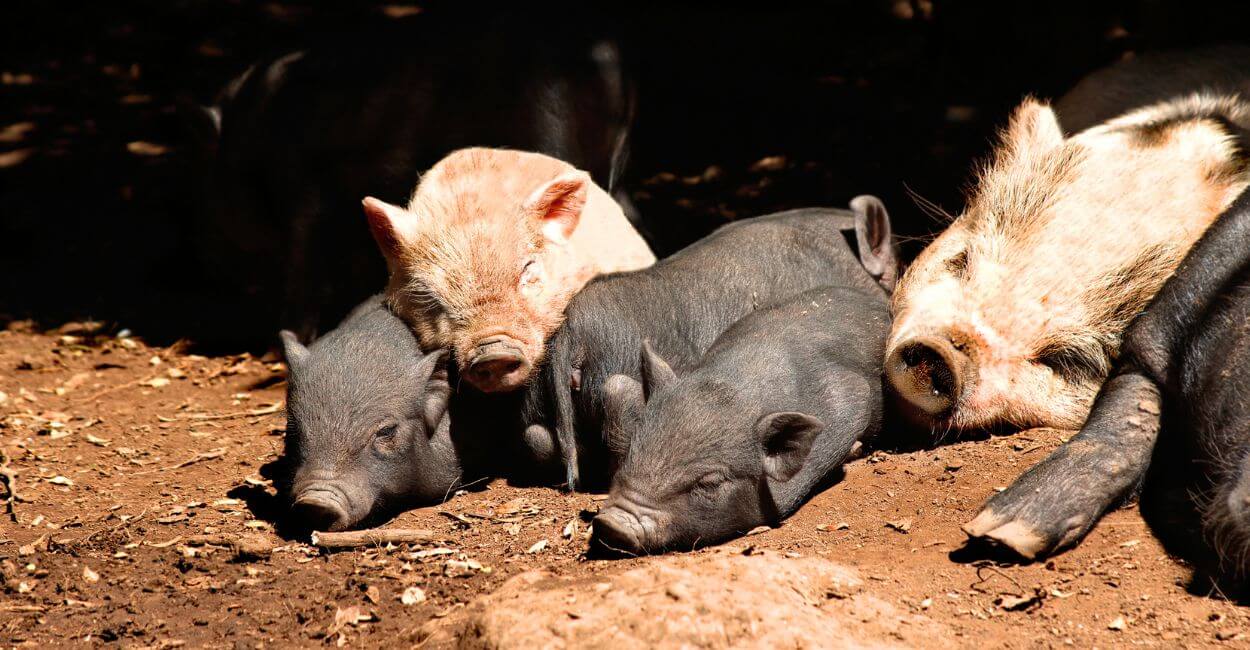
The history of the Vietnamese Pot-bellied pig is relatively short and shrouded in mystery, as many details remain unknown.
This pig originated in Vietnam, specifically from a province called Nam Định located in the Red River Delta. The exact origins of the Vietnamese Pot-bellied pig are not precisely known, but it is believed to have appeared from crossbreeding Southeast Asian pig breeds, particularly those found in Vietnam and Thailand.
This breed gained significant popularity within the local region and gradually spread to other provinces and regions as well. During the 20th century, Vietnamese Pot-bellied pigs were also introduced to Europe and the United States.
What is a Vietnamese Pot-bellied pig?
The Vietnamese Pot-bellied pig is a domestic miniature pig breed that was classified as a critical pig breed by the National Institute of Animal Husbandry in 2003. In 2007, the conservation status of this pig breed was changed to endangered.
Pig Characteristics
Physical Characteristics
The physical characteristics of Vietnamese Pot-bellied pigs are very distinctive, setting them apart from other pig breeds. Here are the unique physical traits of Vietnamese Pot-bellied pigs:
Coat and Color
Vietnamese Pot-bellied pigs can be found in a variety of colors and patterns, including solid black, white, spotted, or a combination of these colors.
Skin
Their skin is thick, tough, and heavily wrinkled, providing them with protection against environmental factors.
Size
The Vietnamese Pot-bellied pigs have a small to medium size, reaching a height of approximately 14 to 20 inches at the shoulder when fully grown. They typically have a length of around 3 feet.
Body
One of their distinctive features is the characteristic potbelly shape, where the abdomen is rounded and prominent. The belly hangs low and extends outward. Their body has a well-rounded form and is relatively compact.
Head
The head of Vietnamese Pot-bellied pigs is slightly dished with a concave shape and is small in comparison to the rest of their well-rounded body.
Ears
Another unique physical characteristic of Vietnamese Pot-bellied pigs is their small ears. Their ears are always erect and stand straight up. The ears do not obstruct their vision, have good mobility, and are always pointed.
Face
The eyes of these pigs are small, while their nose is short and upturned with big, wide, and prominent nostrils. Also, they have heavy, sagging jowls on both sides of their faces.
Legs
Their legs are short and stout, yet proportionate to their small body. They provide good stability and effectively support their overall weight.
Hooves
In addition to their sturdy legs, Vietnamese Pot-bellied pigs have well-developed hooves that contribute to their excellent stability. The hooves are rounded and durable, enabling them to walk with ease and stability.
Teeth
Vietnamese Pot-bellied pigs have 44 teeth, including incisors, canines, premolars, and molars, which they use for grinding and chewing food.
Tail
The tails of Vietnamese Pot-bellied pigs are straight and with a small tuft of hair precisely at the tip of the tail.
Lifespan
A Vietnamese Pot-bellied pig can live for 12 to 20 years, with an average lifespan of 12 to 15 years in the wild and up to 20 years in captivity.
These pigs are known for their long lifespan, as demonstrated by Priscilla, a Vietnamese Pot-bellied pig who entered the Guinness World Records in 2013 as the longest-lived pig, reaching the age of 21 years old or by Ernestine recognized by Guinness World Records as the oldest pig ever.
Growth Rate
The Vietnamese Pot-bellied pigs do not grow as fast as other commercial pig breeds like the Yorkshire or Landrace pigs, and even pasture pigs like the Mangalica. So, they have a very slow growth rate that sets them apart.
What is interesting about the growth rate of Vietnamese Pot-bellied pigs is that there is a difference between their physical development and sexual maturity.
In terms of physical growth, they reach maturity and are considered fully grown at around 5 to 6 years old. They experience faster growth as piglets, but the rate slows down after the first few weeks. They continue to grow and gain weight until reaching maturity at 5 to 6 years old.
On the other hand, Vietnamese Pot-bellied reaches sexual maturity between 5 to 6 months of age, although this can vary based on factors such as genetics and nutrition.
Some female Vietnamese Pot-bellied pigs may reach sexual maturity as early as 3 to 4 months. Males, or boars, also exhibit sexual behaviors and can mate at 5 months old.
It’s important to keep in mind the distinction between physical maturity and sexual maturity as they have different timelines.
Weight
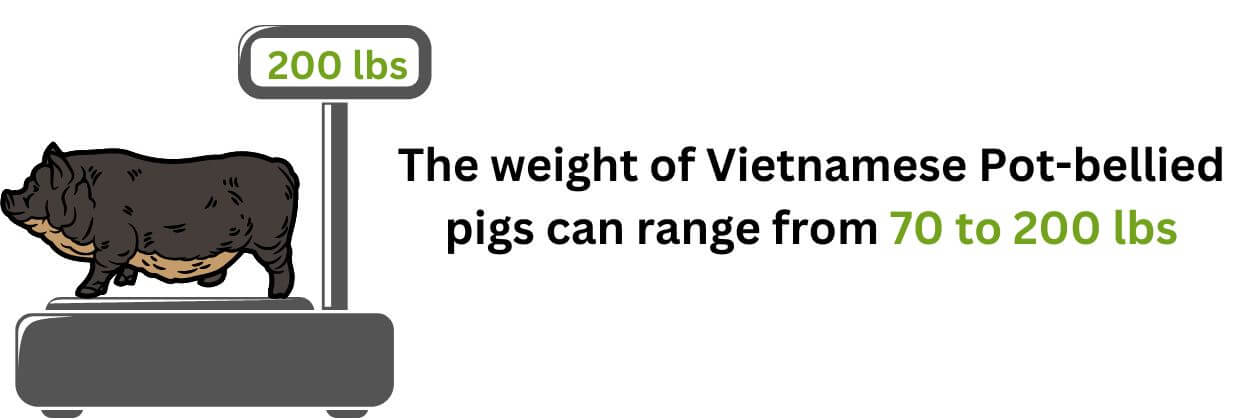
The weight of Vietnamese Pot-bellied pigs can range from 70 to 200 lbs, depending on factors such as genetics, diet, and overall health.
They should generally reach a weight of 50 to 95 lbs by 1 year old and their full weight of 200 lbs at around 5 to 6 years old.
Vietnamese Pot-bellied pigs have lower weights than commercial pig breeds, specifically breeds for meat production like Hampshire pigs.
Slaughter Time
Vietnamese Pot-bellied pigs can be butchered between 6 to 9 months of age.
At this stage, they typically weigh between 50 to 70 lbs. I do not recommend waiting longer to butcher them as they have a slow growth rate beyond this point, resulting in minimal weight gain.
Personally, I choose to butcher them around 6 to 7 months when they already reach the desired weight range of 50 to 70 lbs. From all of that, after butchering, I obtain around 25-30 lbs of meat and lard.
Even if I were to wait longer, the additional growth is minimal. Some pigs that I allowed to grow for an additional year only gained 8 to 10 lbs in weight, which is roughly 20%, and does not significantly impact the final meat yield.
Temperament and Behaviour
The temperament of Vietnamese Pot-bellied pigs is generally calm, docile, friendly, and social. They are not typically violent or aggressive unless they feel threatened or are in a stressful situation. In such cases, they tend to retreat or avoid conflict rather than becoming aggressive towards other animals or humans.
The peaceful nature of these pigs makes them great pets. Also, they have the ability to be trained and learn simple commands. Personally, I have not trained any of my pigs, but recently my 8-year-old daughter expressed an interest in doing so. I will keep you updated on her progress.
What I noticed with my pigs is that Vietnamese Potbelly females can be moody during their fertile period, and it’s good to give them space and not disturb them much. Male pigs, or boars, also show some aggression when in the presence of a fertile female.
Still, if they are not specifically raised as pets and trained as such, it is important to be careful and not leave your child alone with them. In my case, I always make sure to be present when my daughter visits the pigs.
In terms of behavior, Vietnamese Potbelly pigs are playful and curious.
They enjoy engaging in playful activities, running, chasing, and using their snouts to interact with objects. They also have a natural curiosity and will explore their surroundings, including rooting in the soil and grazing.
When they are comfortable and happy tend to grunt and squeal a lot. Overall, their temperament and behavior make them suitable for both experienced and beginner pig owners.
Vietnamese Pot-bellied pig meat
Yes, you can eat Vietnamese Pot-bellied pig meat!
Vietnamese Pot-bellied pig meat is known for its succulence, tenderness, and intense flavor.
If I were to compare it with Landrace pig meat, which is another pig breed I raise, Vietnamese Pot-bellied pig meat has a darker color and a sweeter and more intense taste. This distinctive taste makes their meat excellent for Italian culinary dishes (I say this because I am Italian, but it can be used in other cuisines as well).
I also enjoy incorporating their meat into homemade meat products such as sausages or salami. My father has his own personal recipe for Salsiccia, which are specific Italian sausages. He includes the meat and they turn out to be delicious, thanks in large part to the balanced ratio of fat and lean meat.
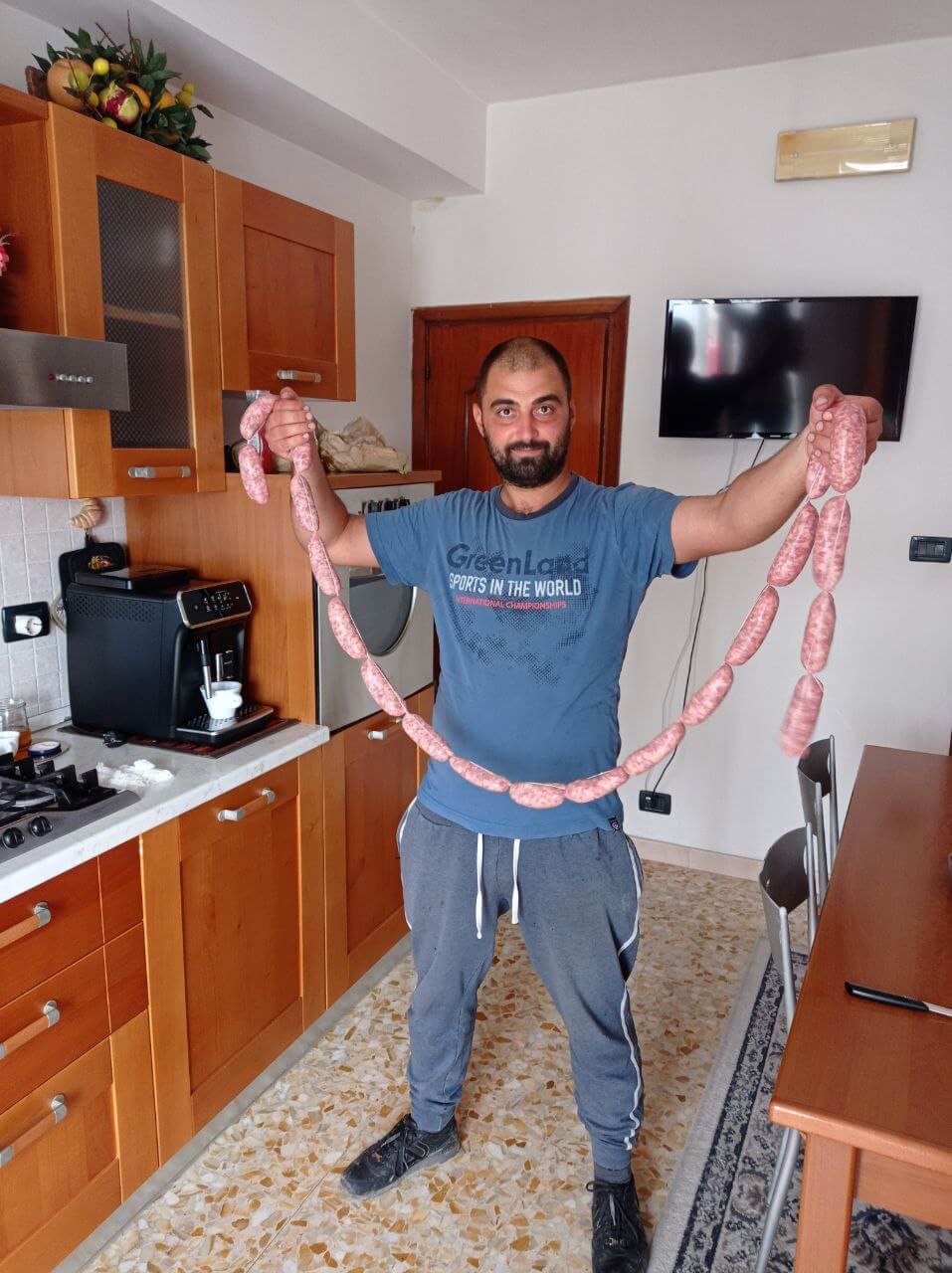
Apart from its taste, the meat of Vietnamese Pot-bellied pigs has a well-balanced ratio of fat to lean meat, which contributes to its exceptional tenderness and juiciness.
While the marbling in the meat may not be as pronounced as in some other pig breeds, it still has a sufficient amount to provide great succulence.
Growing Pot-bellied pigs
Growing Vietnamese Pot-bellied pigs is a great experience as they are docile and relatively easy to handle. It is important to consider their dietary requirements, shelter, and environmental needs in order to ensure their optimal growth and health.
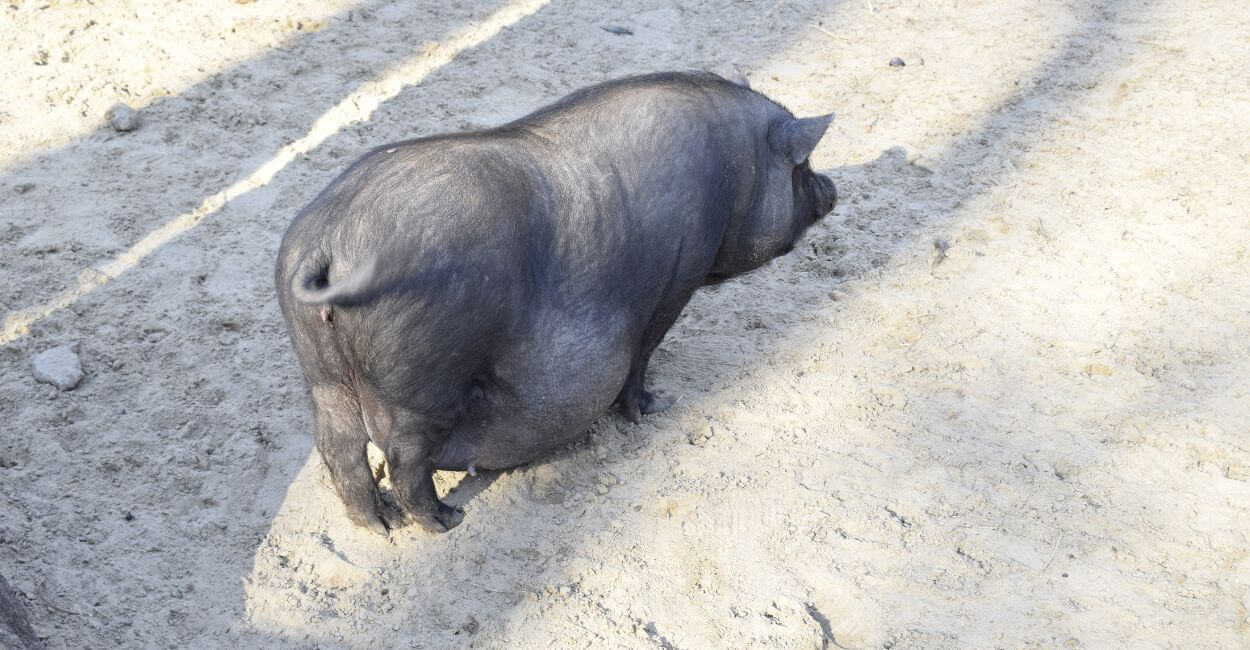
Feeding
Feeding Vietnamese Pot-bellied pigs is quite easy, but it depends on your preferred approach and there are multiple alternatives to consider. I will share what I personally do and how I achieve good results.
My Vietnamese Pot-bellied pigs’ diet primarily consists of vegetables like carrots, lettuce, cucumbers, peppers, fruits like apples, pears, and watermelon, different kitchen scraps and everything they graze and root throughout the day.
I treat them as pasture pigs and allow them to graze and root freely during the day in an area where I have planted various legumes, alfalfa, and nuts.
I split their total daily feed into two portions, one in the morning and one in the evening. Between these meals, they have access to the outdoors to search for their own food like worms, insects, roots, and other delicacies.
When offering kitchen scraps, I ensure they are suitable for the pigs and do not contain excessive amounts of salt or sugar, as these can cause health issues.
I do not frequently purchase hog feed for them, except during winter when grazing options are limited. During this season, they require a larger quantity of food to keep themselves warm. Therefore, I provide them with kitchen scraps, vegetables, fruits, and daily grain supplements.
It is possible to feed them solely with kitchen scraps and a small amount of hog feed. However, I recommend being careful about the type of hog feed you purchase. Some feeds have special formulas that promote rapid weight gain, which is not ideal for these pigs. Choose a regular hog feed without such claims to ensure they grow at a suitable rate without becoming overweight.
The amount of feed your Vietnamese Pot-bellied pig requires depends on factors such as their activity level, access to grazing and rooting areas, the vegetation available, and the weather. As a guideline, a young Vietnamese Potbelly pig should receive approximately 3-3.5% of their body weight in dry feed.
One important aspect to note is that as they age and reach one year old, they may start eating more without gaining significant weight unless they are fed incorrectly and accumulate excessive fat.
What Should You Not Feed Pot-bellied Pigs?
Vietnamese Pot-bellied pigs should not be fed processed foods, sugary treats, foods high in salt, or toxic foods such as chocolate, avocados, onions, and moldy foods. These types of food can seriously harm their health.
Environment
The ideal environment for Vietnamese Pot-bellied pigs is typically small farms and homesteads, as they are not well-suited for commercial pig farms.
These pigs need a bit of freedom and outdoor space to satisfy their curiosity and engage in natural behaviors. They can also be successfully raised in larger spaces if provided with enough care and attention.
Having access to outdoor areas allows them to graze, root, and explore, which are essential behaviors for their overall health. My pigs spend the majority of their time outdoors grazing, similar to true pasture pigs, even though they are not.
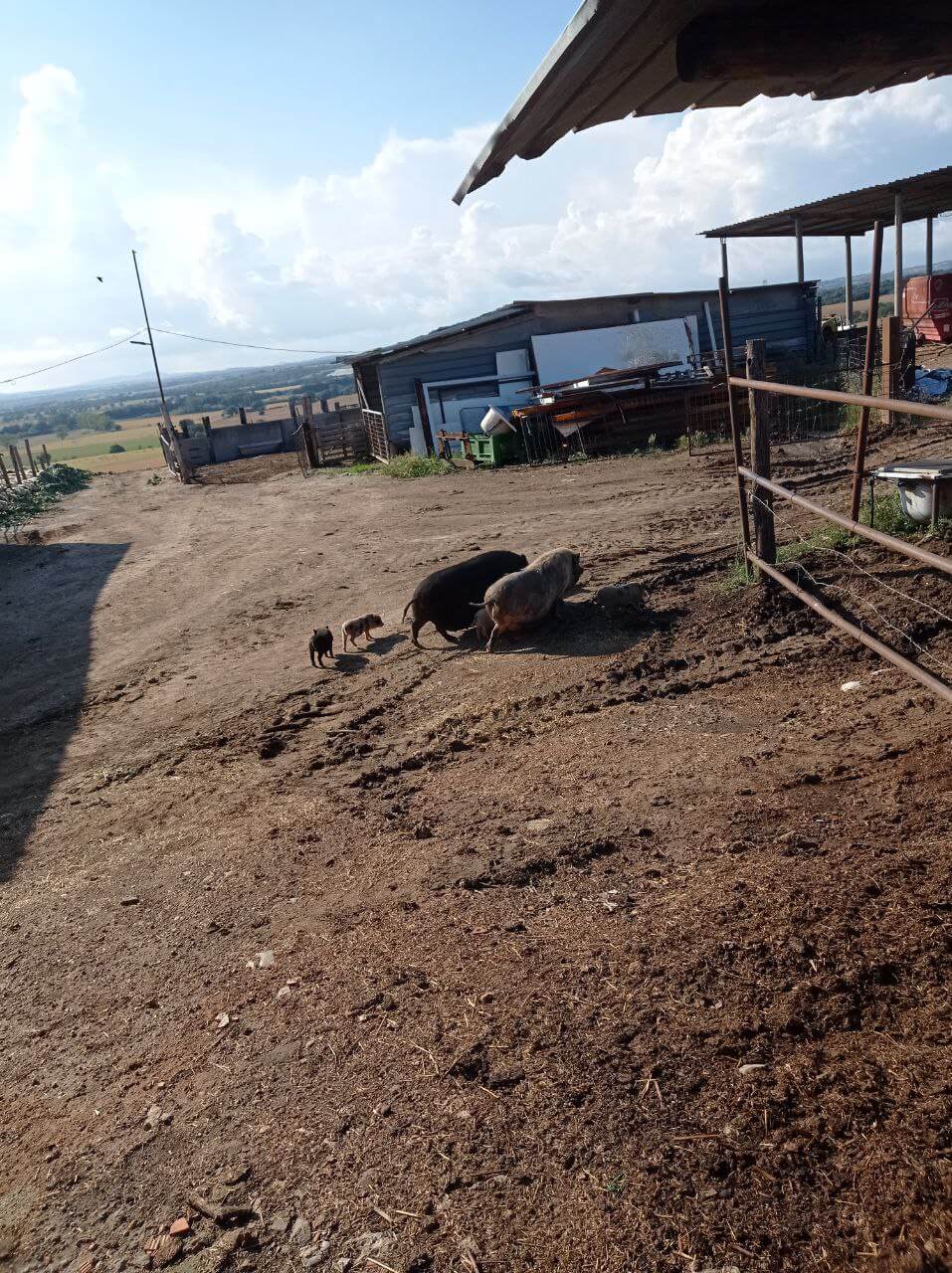

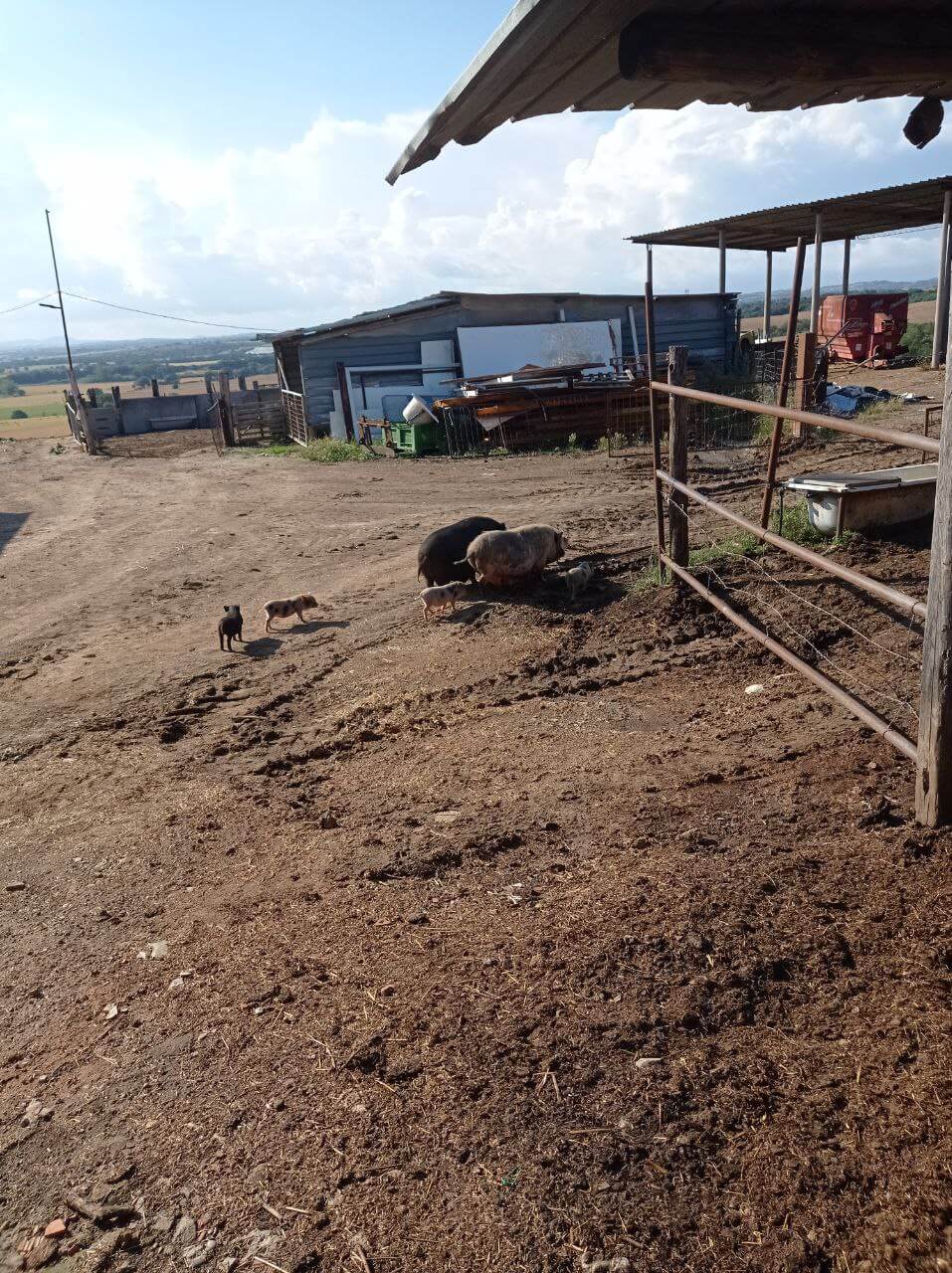
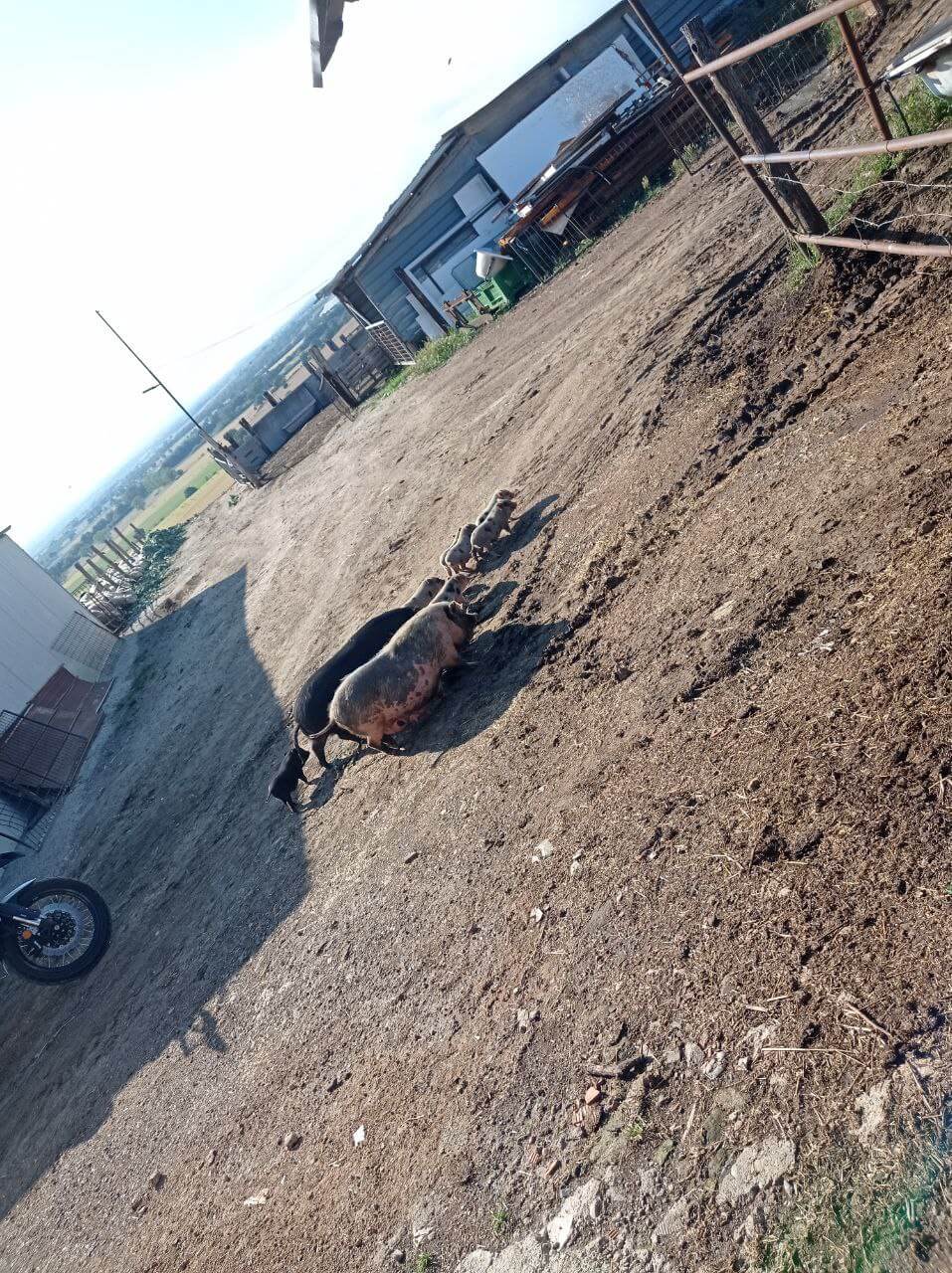
While pens can be suitable for raising these pigs, it’s important to ensure that the pens are spacious enough to allow for comfortable movement.
It’s also important to delimitate their area with something like an electric fence, as with any other pig breed. This helps them understand the boundaries of their designated area and ensures their safety and security.
Climate
The ideal climate for Vietnamese Pot-bellied pigs is a warm one. Thanks to their Southeast Asian roots they have a natural resilience to hot and humid weather conditions.
They can also adapt to various climates as long as they are provided with appropriate temperature control during colder seasons.
In my area, temperatures can reach up to 104°F (40°C) during the hot season and drop to 41°F (5°C) in the cold season. However, my pigs do just fine in these conditions primarily because they have a suitable shelter and mud wallows to help them regulate their body temperature.
Shelter
Vietnamese Pot-bellied pigs require shelter regardless of the temperature or season. During hot weather, they need a shelter that provides shade and helps them stay cool. In colder seasons, it’s important to provide them with a proper shelter that keeps them warm and provides dry bedding.
In my area, where temperatures rarely drop below 41°F (5°C) in the cold season, I ensure their warmth by adding extra straw to their shelter.
If you live in an area where temperatures can significantly drop, I would recommend you insulate their shelter to provide adequate warmth. These pigs lack fur or hair to naturally keep them warm, so it’s important to take appropriate measures to protect them from the cold.
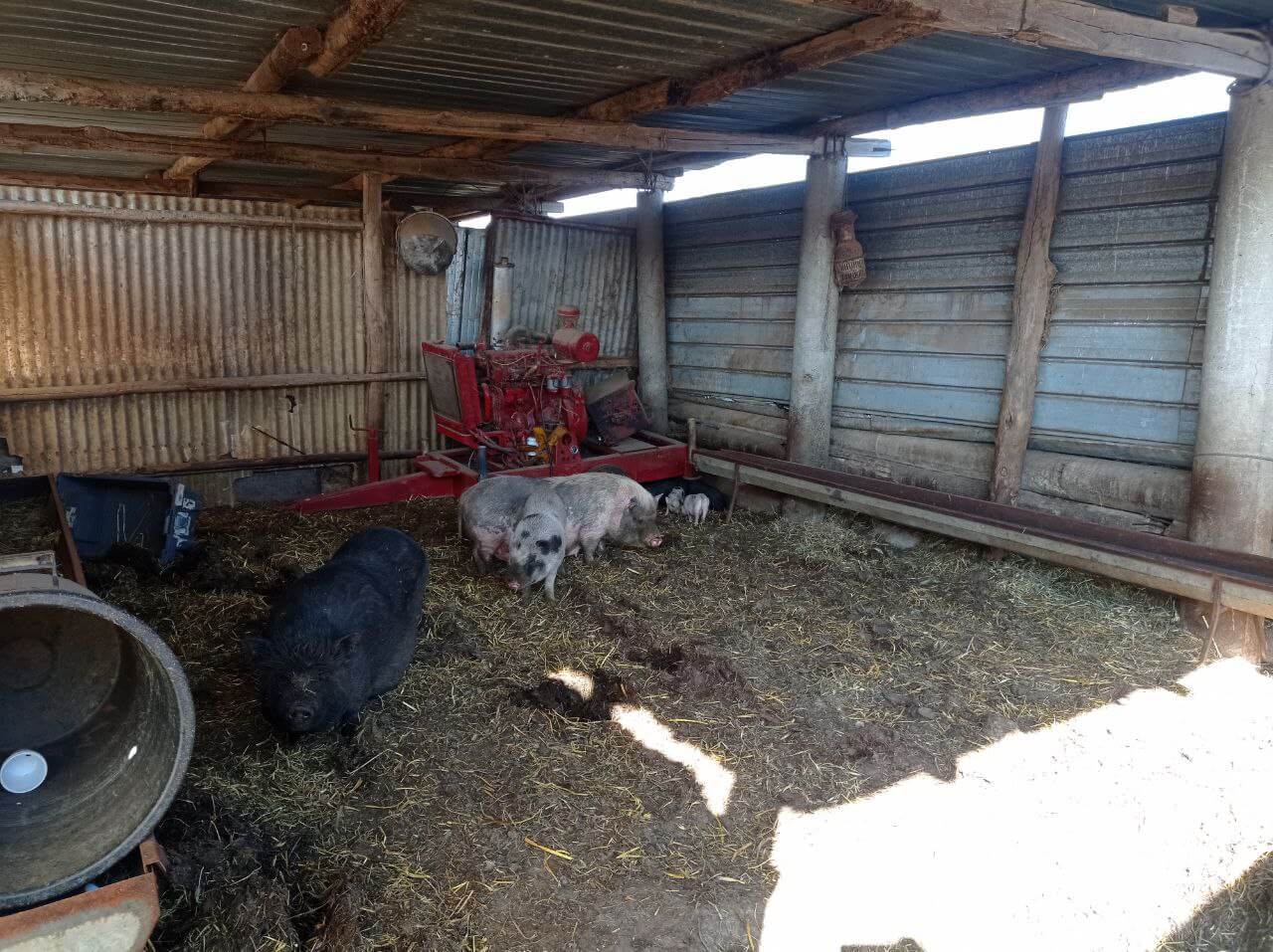
Breeding Vietnamese Pot-bellied pigs
Vietnamese Pot-bellied pigs can be bred as early as 3-4 months of age.
I do not recommend breeding them at such a young age, especially for females, as they can be quite fragile and may be more susceptible to health issues during pregnancy or after farrowing.
In my personal experience, I prefer to wait until they are around 8 to 9 months old before breeding them. This ensures that the females are in a better condition to handle pregnancy and the post-birth period, resulting in healthier outcomes for both the mother and piglets.
Breeding Vietnamese Pot-bellied pigs involves introducing a fertile female that is in heat to a boar. It’s important to allow them to stay together for a period of time because they have a ritual before actual breeding takes place. They love to fight before mating.
The female may display some aggression towards the boar, and it’s not uncommon for them to engage in fights. Some of my pigs have even gotten serious scratches and bites before successful breeding happened.
After the mating of the female with the boar, starts the gestation period. Vietnamese Pot-bellied females have a gestation period of 113 to 155 days.
The litter size of the Vietnamese Pot-bellied pig is 8 to 12 piglets.
In general, females do not require support or assistance during farrowing, as they are capable of giving birth without issues.
After birth, they show excellent mothering skills and take good care of their piglets. It’s important to note that they may become stressed if someone unfamiliar approach their piglets. It is better for someone they recognize to assist with the piglets if necessary.
Vietnamese Pot-bellied piglets require heat management to keep their bodies warm during colder seasons. However, in warmer seasons, the sow will take care of the task by preparing their bedding and providing a suitable area for them to stay.
The sow produces an ample quantity of milk to nourish her piglets.
Health issues
Some of the most common health issues in Vietnamese Pot-bellied are:
– Obesity: They have a tendency to gain weight easily, so overeating can lead to health problems such as heart disease.
– Skin conditions: Due to their hairless or sparse hair coat, Vietnamese Potbelly pigs can be prone to skin infections, sunburn, and infestations by parasites like mange, lice, or mites.
– Respiratory problems: Pneumonia and other respiratory infections can affect Vietnamese Potbelly pigs, especially if they are housed in crowded or poorly ventilated environments.
– Joint and mobility issues: Their compact body structure and short legs may predispose them to joint problems and mobility issues like arthritis or lameness.
– Digestive issues like constipation due to pigs’ low water intake.
Vaccination
The Vietnamese Pot-bellied pigs can follow the same common pig vaccination schedule that is generally recommended for other pig breeds.
Although I prefer to raise my pigs in a more organic and minimally intervened manner, I do vaccinate my pigs. This is mainly due to the climate in which I live and their behavior.
In my area, the temperatures can be quite high from the beginning of May until the beginning of October. As a result, my pigs spend a lot of time in the mud wallowing, which can make them dirty. They also choose to nap in their covered shelter, which provides them with great shade.
Unfortunately, this means that their living area tends to get dirty more quickly than I am able to clean it.
So, to prevent diseases that can be caused by their tendency to get dirty and then nap, I administer vaccines for Ileitis, Erysipelas, pseudorabies, Mycoplasmal pneumonia, and Leptospirosis.
Is it worth raising Vietnamese Pot-bellied pigs?
Profitability
Raising Vietnamese Pot-bellied pigs is not a profitable business.
There are several factors that contribute to the limited profit potential of this pig breed. Firstly, their small size and slow growth rate mean that it takes a longer time for them to reach market weight.
Apart from their small size and growth rate, there is the fact that they are not a pig breed for meat production. Compared to larger pig breeds specifically developed for their meat yield, the amount of meat obtained from Vietnamese Pot-bellied pigs is relatively limited. Moreover, it would be quite challenging to sell their meat at a good price that would cover your expenses.
Considering these factors, if your goal is to raise a pig breed that can generate significant profit, Vietnamese Pot-bellied pigs are not the ideal choice.
Personal Use
Since they cannot be a profitable business, why should they be raised on a homestead, and what are Vietnamese Pot-bellied pigs used for?
Vietnamese Pot-bellied pigs can be used for their meat and lard on a homestead or small farm. While the meat yield may not be substantial, it is a good choice for homesteads looking to obtain a sufficient quantity of lard as well.
Personally, I raise Vietnamese Pot-bellied pigs on my farm because:
– They are well-suited for higher temperatures, making them ideal for the hot summers. With access to a wallow, shade, and plenty of fresh water, I don’t have to worry about them suffering from heat stress. This is particularly advantageous compared to other pig breeds like Piétrain, which are more susceptible to heat-related issues.
– Vietnamese Pot-bellied pigs are relatively low-maintenance. Aside from regular feeding and cleaning their living area, they are independent and require less attention throughout the day. This works well for me as I also have other animals and vegetables to tend to on my farm, allowing me to distribute my focus and time more efficiently.
– One of the benefits of raising Vietnamese Pot-bellied pigs is the quantity of lard they produce. While I raise them for meat, I also appreciate the generous amount of lard they provide. I choose to raise some pigs to a regular weight to provide a balance of lean meat and fat, while others I specifically fatten up to increase lard production. I utilize the lard to make tallow, which I frequently use in cooking.
How much does a Pot-bellied pig cost?
A Vietnamese Pot-bellied pig can cost up to $600, with prices even reaching as high as $1000 for these miniature pigs, particularly those that are registered or of show quality. The cost of this pig breed is not cheap by any means.
Advantages and Disadvantages
The Vietnamese Pot-bellied pig’s advantages are as follows:
- Docile and calm temperament, along with an extremely friendly and sociable nature.
- Good mothering skills, as the sow is able to take care of the piglets and provides an ample amount of colostrum for their nutrition.
- Great litter size, typically ranging between 8 to 12 piglets.
- Well-suited for warmer climates and exhibits good tolerance to heat.
- Low maintenance requirements, making them an excellent pig breed for homesteads or small farms with limited resources.
- Quite hardy pig breed that is generally resistant to frequent illnesses.
The Vietnamese Pot-bellied pig’s disadvantages are as follows:
- Slow growth rate compared to other commercial pig breeds.
- Limited meat yield, which may not be sufficient for large-scale meat production.
- Can be challenging to find a market for their meat or products at a price that covers expenses.
- Purchase price can be quite expensive.
Photo gallery
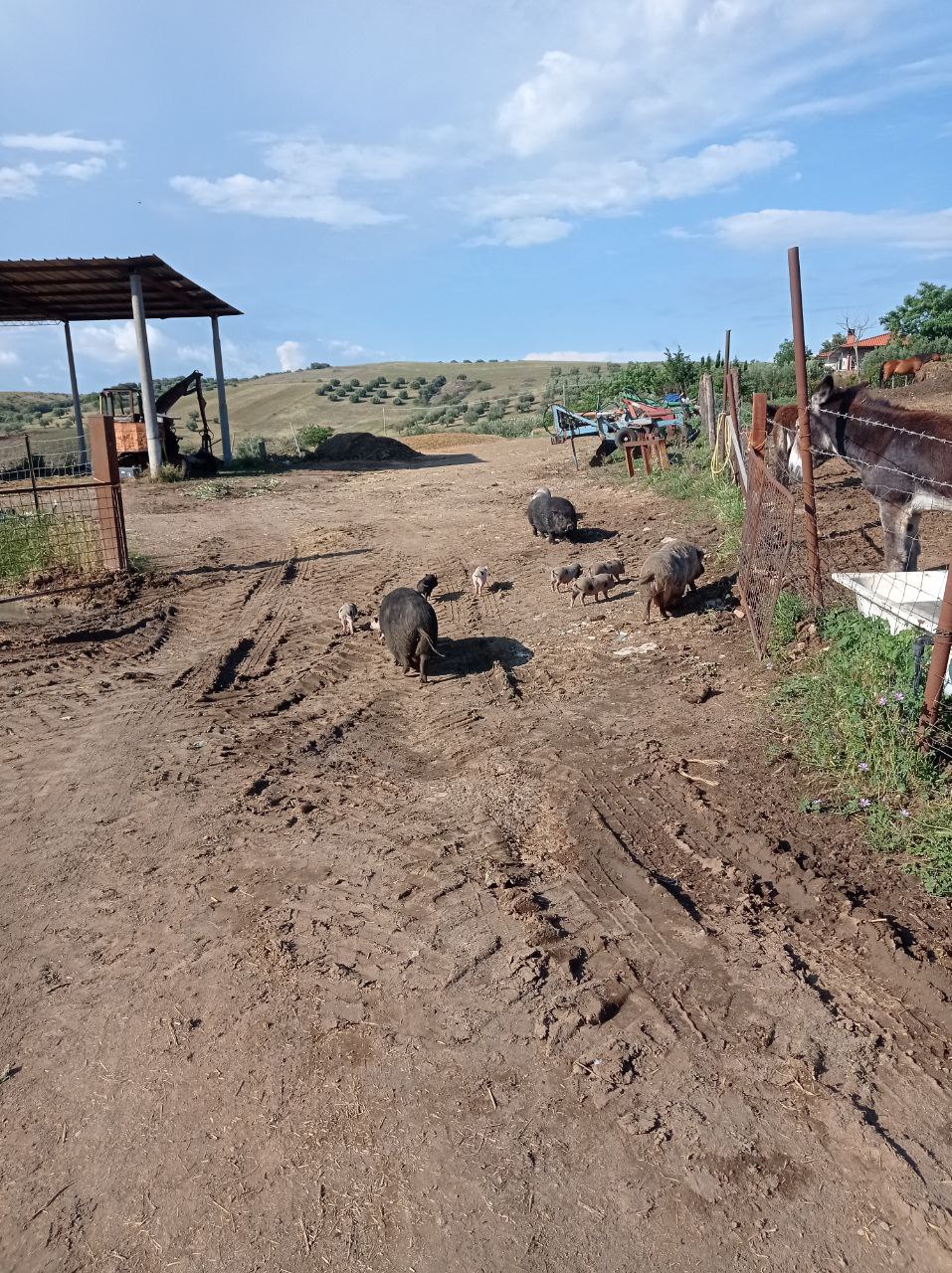
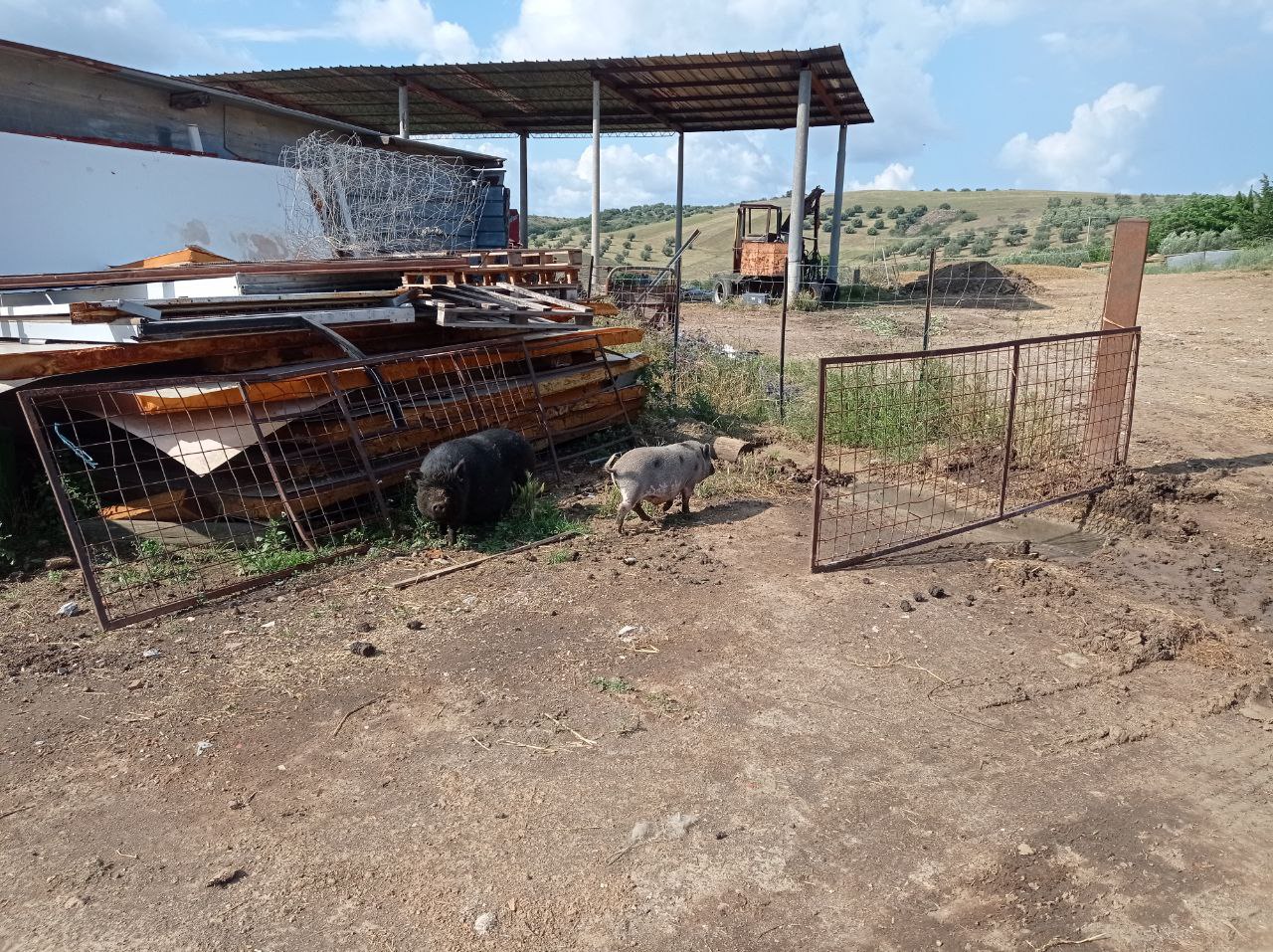
I gave names to some of my Vietnamese Pot-bellied pigs. In the picture below, you can see Grande Pancia, the black pig (the name means “big belly” in Italian), and Dama Bianca (Lady White).
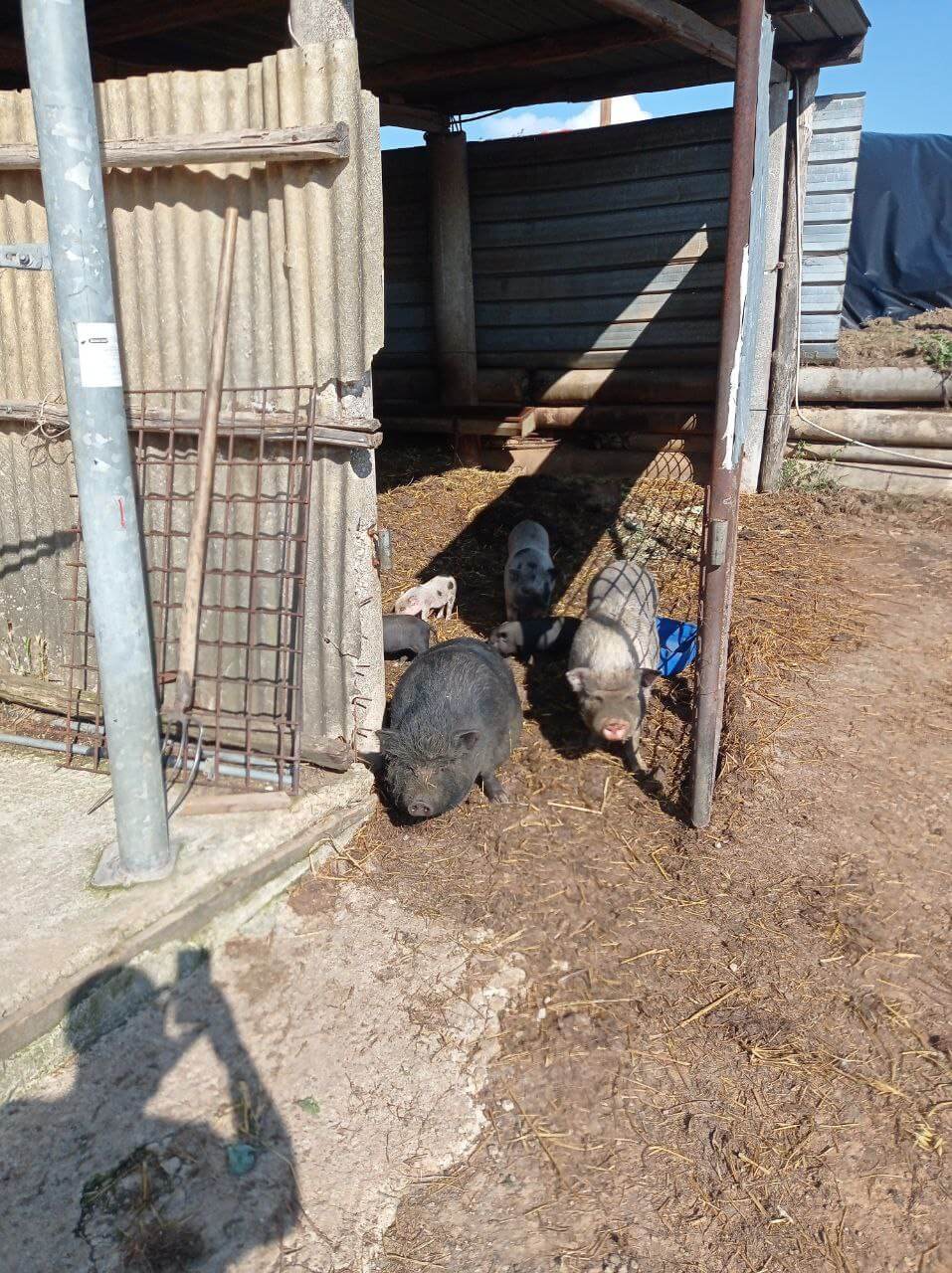
If you have any questions about this breed of pigs that were not answered in my article, please don’t hesitate to contact me using the comment form below.
I would be delighted to share the knowledge I have accumulated over time about Vietnamese Pot-bellied pigs.


